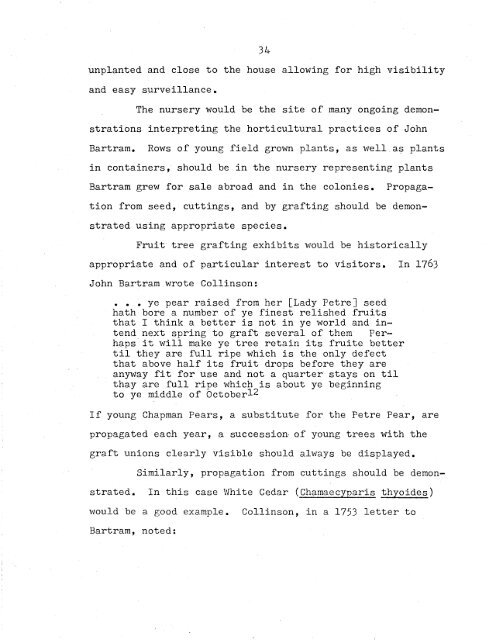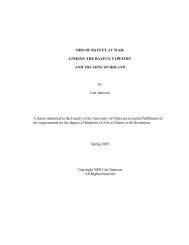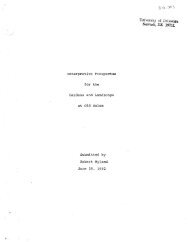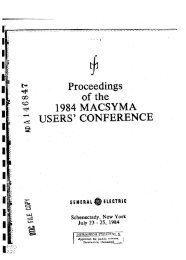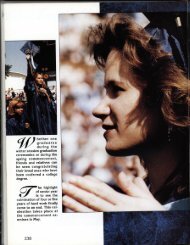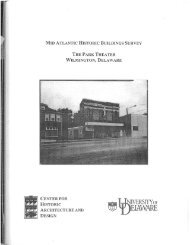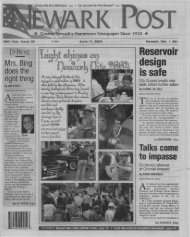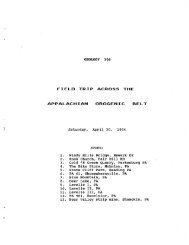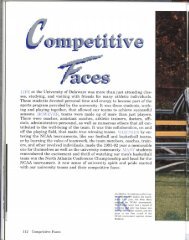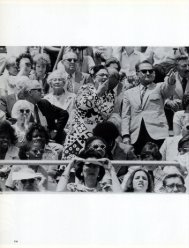interpretation of john bartram's garden by - University of Delaware ...
interpretation of john bartram's garden by - University of Delaware ...
interpretation of john bartram's garden by - University of Delaware ...
You also want an ePaper? Increase the reach of your titles
YUMPU automatically turns print PDFs into web optimized ePapers that Google loves.
34<br />
unplanted and close to the house allowing for high visibility<br />
and easy surveillance.<br />
The nursery would be the site <strong>of</strong> many ongoing demon-<br />
strations interpreting the horticultural practices <strong>of</strong> John<br />
Bartram. Rows <strong>of</strong> young field grown plants, as well as plants<br />
in containers, should be in the nursery representing plants<br />
Bartram grew for sale abroad and in the colonies. Propaga-<br />
tion from seed, cuttings, and <strong>by</strong> grafting should be demon-<br />
strated using appropriate species.<br />
Fruit tree grafting exhibits would be historically<br />
appropriate and <strong>of</strong> particular interest to visitors. In 1763<br />
John Bartram wrote Collinson:<br />
. . a<br />
ye pear raised from her [Lady Petrel seed<br />
hath bore a number <strong>of</strong> ye finest relished fruits<br />
that I think a better is not in ye world and intend<br />
next spring to graft several <strong>of</strong> them Perhaps<br />
it will make ye tree retain its fruite better<br />
til they are full ripe which is the only defect<br />
that above half its fruit drops before they are<br />
anyway fit for use and not a quarter stays on til<br />
thay are full ripe which is about ye beginning<br />
to ye middle <strong>of</strong> October12<br />
If young Chapman Pears, a substitute for the Petre Pear, are<br />
propagated each year, a succession, <strong>of</strong> young trees with the<br />
graft unions clearly visible should always be displayed.<br />
Similarly, propagation from cuttings should be demon-<br />
strated. In this case White Cedar (Chamaecyparis thyoides)<br />
would be a good example. Collinson, in a 1753 letter to<br />
Bartram, noted:


